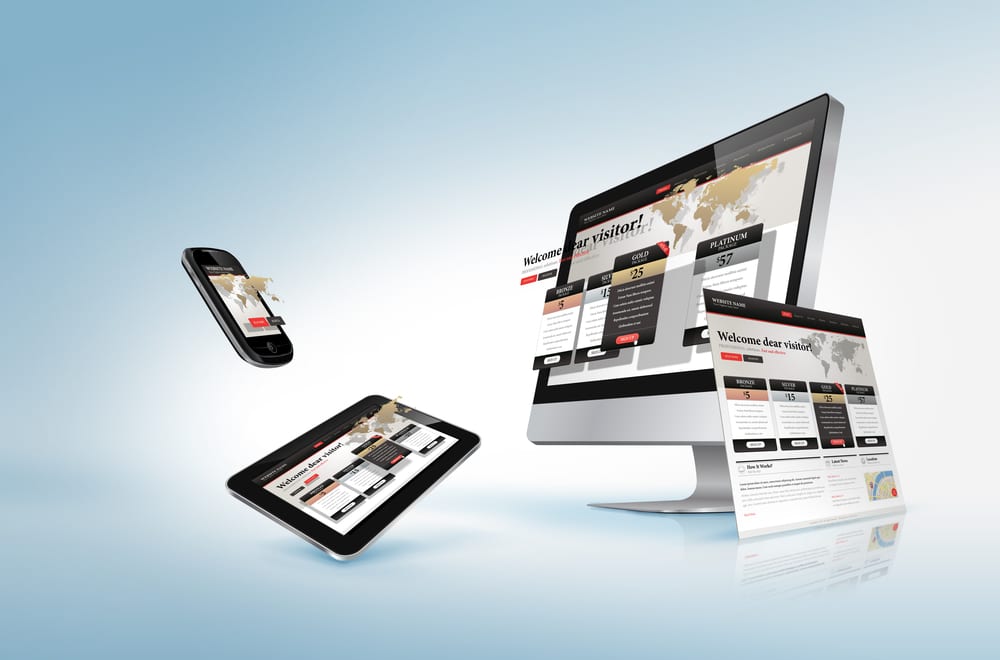Designing a web user interface means designing your website in a way that is user-friendly and user-centred, allowing efficient use of the website and optimal benefit to the users.
Here is a check-list for you to go through when designing a web user interface for your audience:
#1. Is Your Website Clear Enough?
This means that your website should be straightforward, clearly indicating your goals, the purpose of the website and how the user should go about using it. If the users cannot understand how to browse around your website or find what they is looking for, they will leave immediately, usually within a few seconds. Therefore, your web design interface should be such that it encourages the user to navigate around with ease.
#2. Is Your Content Concise?
While focusing on the first point, you might divulge into giving too much information about each aspect of your business and your website. This would create a huge amount of content on your website, ruining your web interface. The content that you post on the website should be descriptive but concise. It should be to the point yet be able to deliver the message.
#3. Can Your Users Relate To or Identify With Your Interface?
People prefer using things that they are comfortable with. Especially, on the internet, where there is a new update every other day, users find it easier to use stuff that they have previously used and know their way around. This means that your web interface should be such that your users will be easily able to identify and understand its use immediately. Find out what your users prefer, think about their convenience and then design a web interface that suits your users’ preferences the most.
#4. Is Your Web Interface Responsive?
As mentioned above, if the users cannot find what they are looking for in the first few seconds of visiting the website, they will leave. This means that your web interface should be responsive enough for them. The word responsive here can mean two things: one, the web pages should load quickly, with all data downloaded; second, the website should automatically adapt to the screen size of the smart device being used. Both the points are highly essential since they have a major impact on user experience.
#5. Is Your Web Interface Consistent Throughout The Website?
As mentioned previously, users prefer using what they already know how to use. Therefore, if you have introduced them to a particular interface design on the first landing page, make sure that all the pages have the same design. This way, once the user knows how to go about the first page, he or she can easily browse around the website. Changing interface design at every page not only confuses the user on the usability of the website, but also reflects your brand image as inconsistent.
#6. Is Your Web Interface Attractive?
While making the web interface user-friendly, practical and functional, many people forget the aesthetics importance. Yes, how your interface looks on the outside is important too. People usually judge the website with the first glance. Therefore, if your website is not attractive enough, they might not stay around to see the other efforts; you have put in designing the interface for them.
#7. Is Your Web Interface Efficient?
Your website should allow the users to find what they want and get the task done in the least possible time. In this era of fast-paced technology, users prefer tasks that can be done with a click or two. This is why, creating an efficient interface is critical. Find out what your audience wants and portray it all in a way that they can find it easily on the website. Furthermore, make sure that each task that they need to be done, does not involve a multitude of actions or going to multiple numbers of pages to get the task done.
#8. Does Your Web Interface Allow Mistakes?
While doing things in a rush, users usually click the wrong icons or take wrong decisions. Your web interface should prevent happening of these mistakes to make the users more comfortable while using the website. The interface can allow for mistakes through options such as offering an undo button and displaying an alternative selection message.
The user interface needs to be user-centred and therefore, before designing a web interface, always make sure that each aspect conforms to the goals and convenience of the users.
Images: ”web design concept/ Shutterstock.com“
__________________________________________________________________________________
 Connect with Tweak Your Biz:
Connect with Tweak Your Biz:
Would you like to write for Tweak Your Biz?
Tweak Your Biz is an international, business advice community and online publication. Today it is read by over 300,000 business people each month (unique visitors, Google Analytics, December, 2014). See our review of 2014 for more information.
An outstanding title can increase tweets, Facebook Likes, and visitor traffic by 50% or more. Generate great titles for your articles and blog posts with the Tweak Your Biz Title Generator.


 Connect with Tweak Your Biz:
Connect with Tweak Your Biz:


